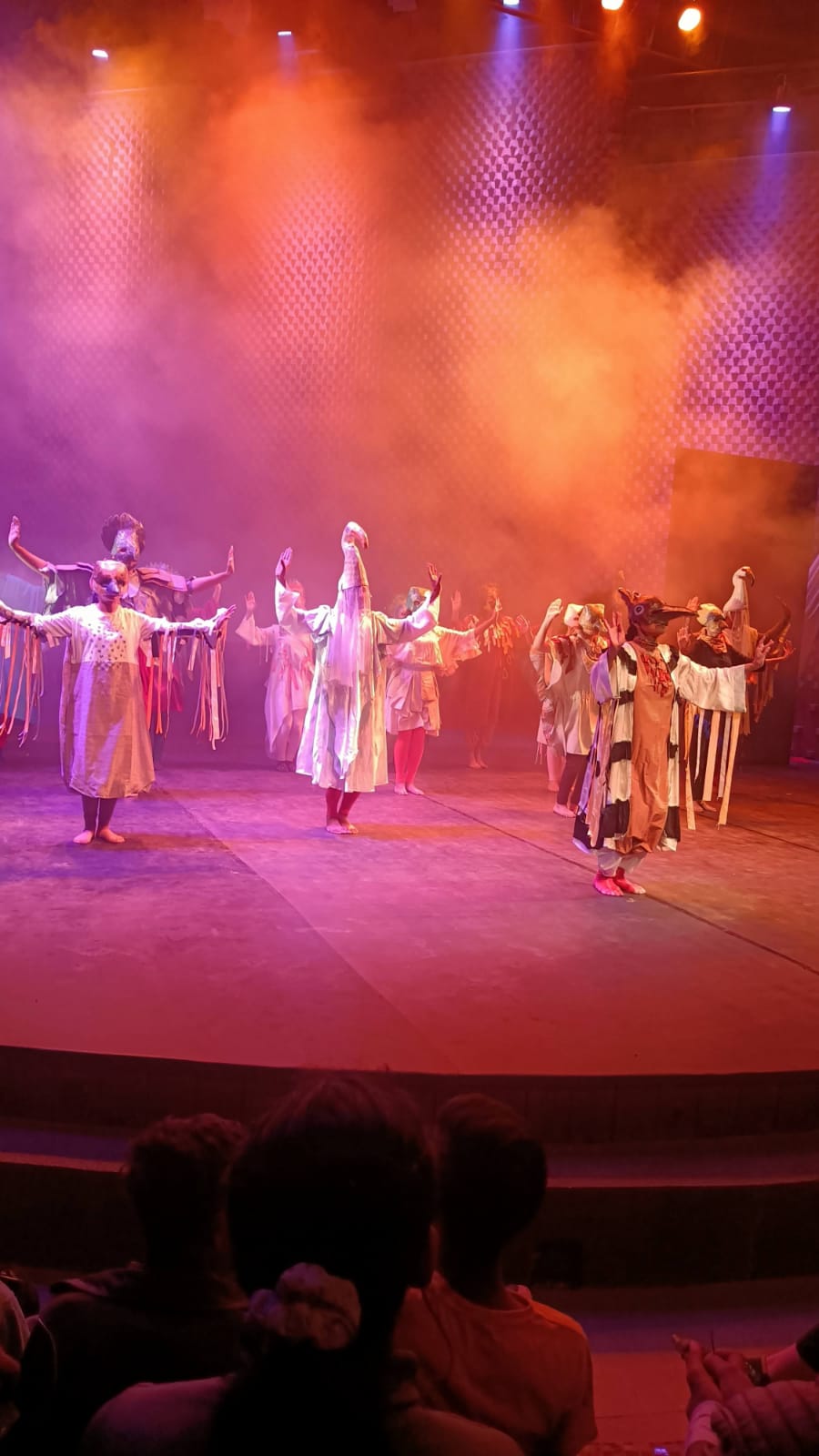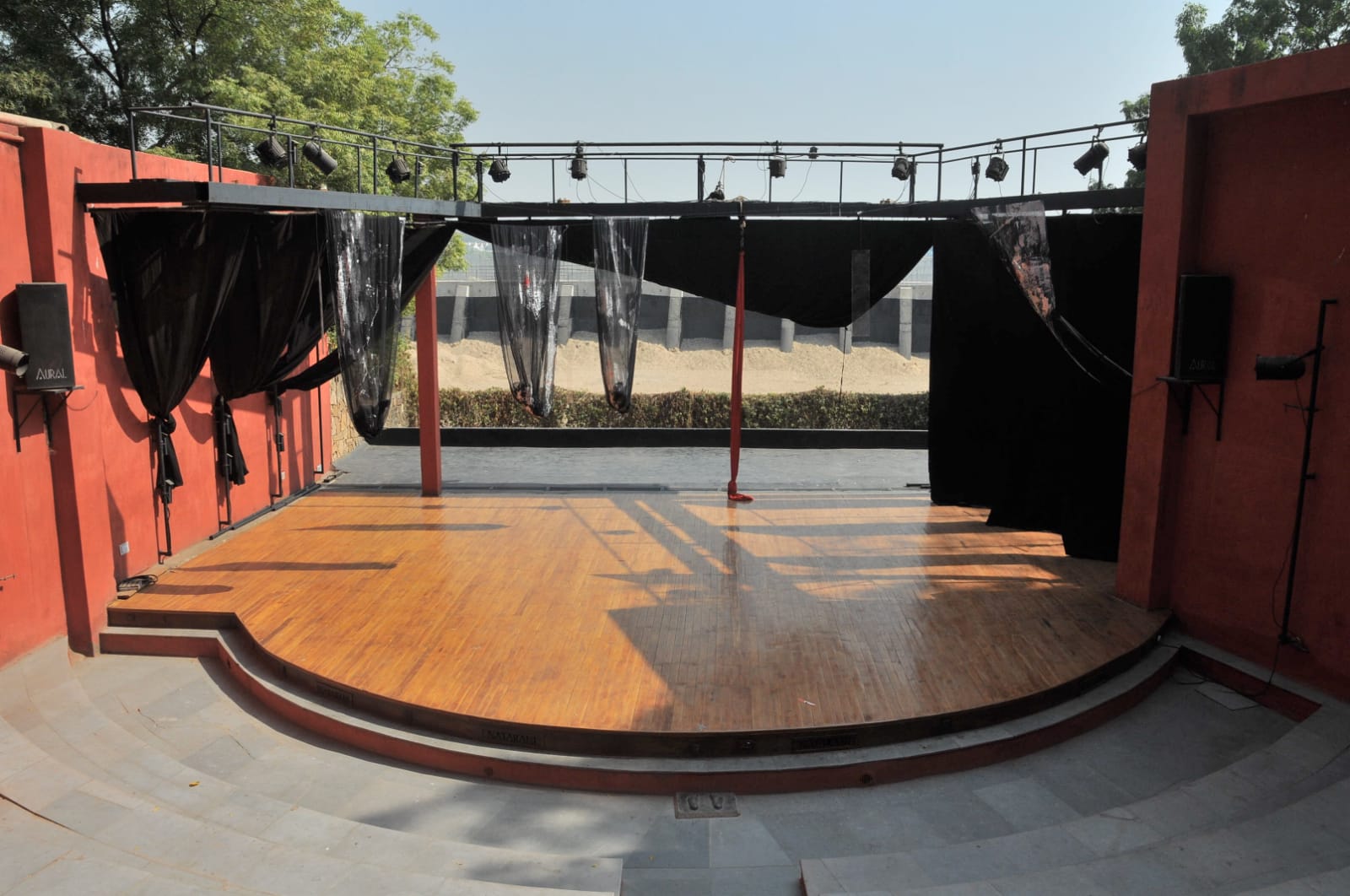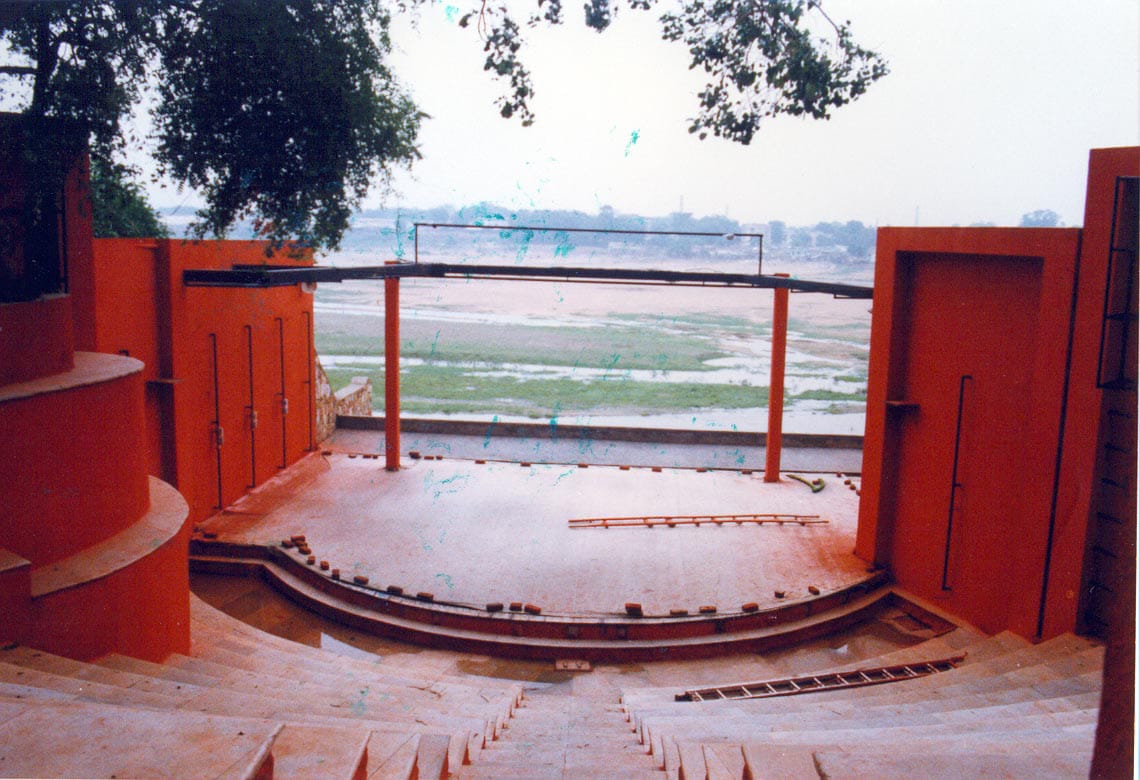
 By Rathin Das*
By Rathin Das*
Ahmedabad: It is a feast for the eyes to watch enchanting performances of classical dance forms like Kathak, Bharatnatyam, Odissi or Kuchipudi. But little do the spectators know what pain the dancers feel in their heels every time they hit a hard, faulty stage floor, often made of concrete or uneven or worse, with nails sticking out.
Unavailability of what dancers call the ‘sprung stage’ is the main cause behind many classical dancers getting knee joint problems even in their 40’s, eminent danseuse Mallika Sarabhai disclosed at the ‘Natarani’ amphitheatre in Ahmedabad recently.

Apparently, a minor issue for others, having a ‘sprung stage’ – a dance floor that springs back with every hit— is essential for a good performance as well as the health of dancers. This is, in the words of Mallika Sarabhai, the science of dance.
Precisely with this purpose of providing a ‘sprung stage’, the ‘Natarani has undertaken a thorough renovation of the floor of its stage in the open-air amphitheatre that is exposed to the vagaries of weather.

“The open-to-sky wooden stage is exposed to temperatures ranging from 2 degrees to 48 degrees Celsius and three months of monsoon”, said Sarabhai, a dancer par excellence, adding that it is, hence, very difficult to find the right kind of wood for the dance floor that would last for a long time.
She informed that the stage floor had to be changed as many as seven times in the 30 years since Natarani was set up next to the Sarabhais’ ancestral home on the western bank of the Sabarmati River in Ahmedabad.
After experimenting with various types of woods in the last three decades, the Natarani has now zeroed in on Red Cedar wood imported from Canada.

The reconstruction job, estimated to cost nearly Rs 14 lakhs, has been entrusted to a leading wood crafting company Pierro which specializes in solid wood-based products.
Red Cedar, which takes 300 years to grow, provides a unique blend and is naturally termite resistant, said Tanmai Vachhani of Pierro.
He said that the sprung stage made with Red Cedar would have no nails and the lower deck wooden planks would have ‘finger joining’. The wooden planks of the upper deck would have a ‘tongue & groove’ system of joining to make it smooth so that dancers do not get any injuries.

This innovation would safeguard the health of dancers who often face knee problems from prolonged performances on hard surfaces, said Sarabhai.
She also regretted that the floors of make-shift stages at public events are so dangerous for dancers due to sticking out nails that many of them have to perpetually remain under tetanus injections.
Moreover, the Green Rooms in the auditoriums are often next to unhygienic and stinking toilets, causing inconvenience to the dancers.





